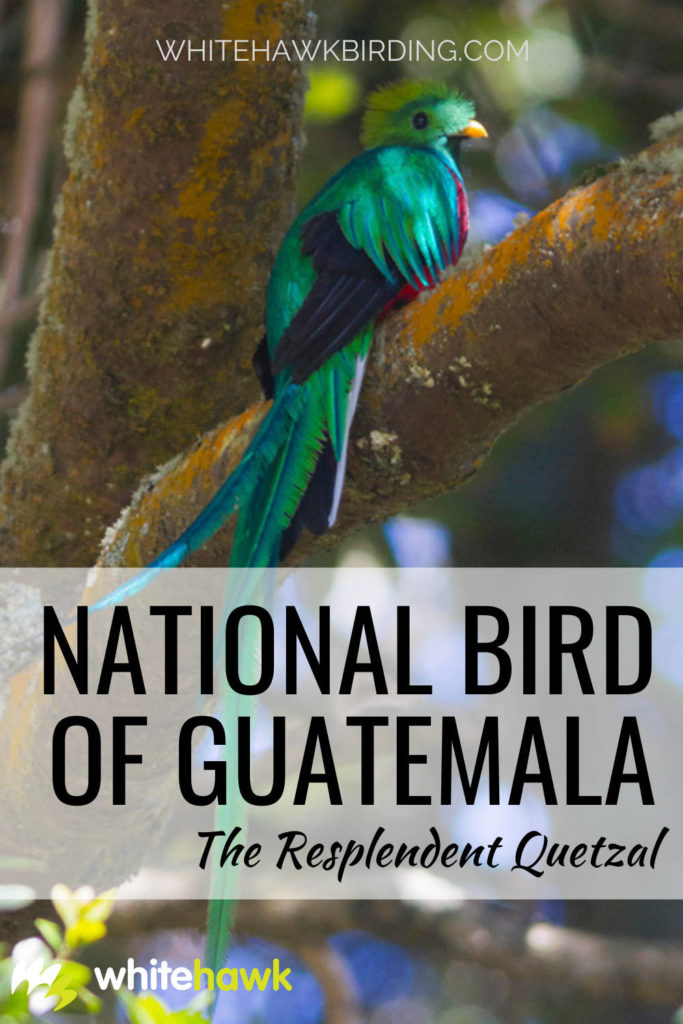Have you ever wondered which birds are considered the most beautiful ones on Earth? No matter who’s making the list, it is safe to say that you will probably find the national bird of Guatemala on it. This bird is known for its brilliant green plumage, rich red underparts, shaggy green crest, and most of all, its long wispy tail feathers extending twice the length of the bird itself. We are speaking of course, about the RESPLENDENT QUETZAL – which is found in the lush cloud forests of Central America and is one of the most spectacular looking birds on Earth.
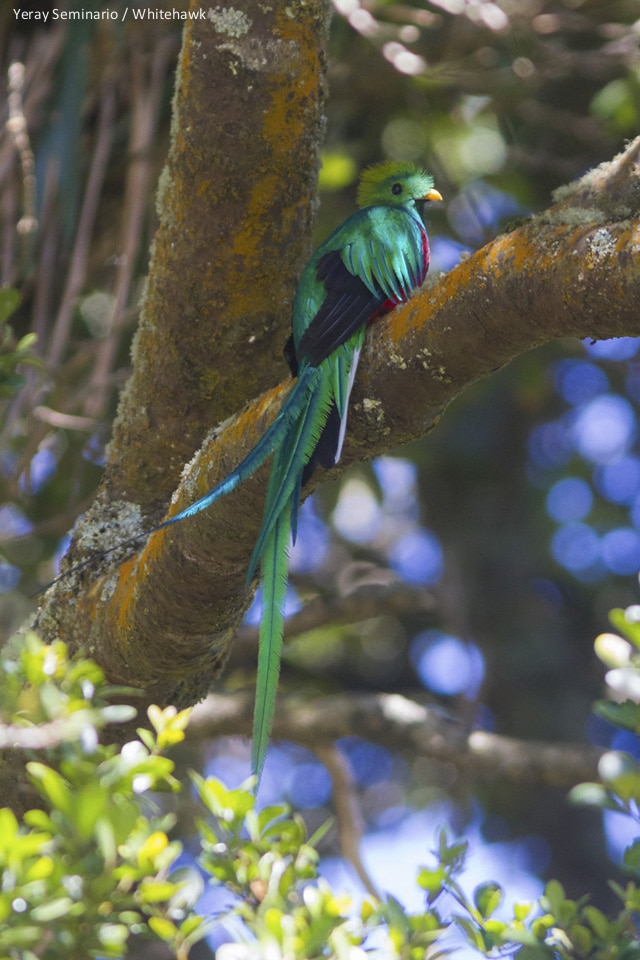
A Truly Resplendent Bird
The Resplendent Quetzal (Pharomachrus mocinno) is truly, as its name says, resplendent. There could be no better way to describe this bird. On top of the above description, the male Resplendent Quetzal has decorative covert feathers on its wings that curve towards its belly. It has large dark eyes adapted for good vision in the dark forest understory and a bright yellow bill. Its tail has snowy white squared off feathers, but it’s the long tail plumes that really captivate us. Males and females are sexually dimorphic, meaning they look different. Females lack the long tail feathers, shaggy crest, and are duller overall. The Resplendent Quetzal is the largest member of its family. It is 36-40 cm long, and the tail feathers of the male add another 65 cm to its overall length.
Quetzals are members of the trogon family, Trogonidae. The family contains 46 species distributed through tropical and subtropical regions worldwide. Trogons reach their greatest diversity in the Neotropics, where 25 species of trogons reside as well as 6 species of quetzals. The Resplendent Quetzal is one of 5 species of quetzals in the genus Pharomachrus. It is the only species of quetzal distributed throughout Central America. It ranges from southern Mexico to western Panama.
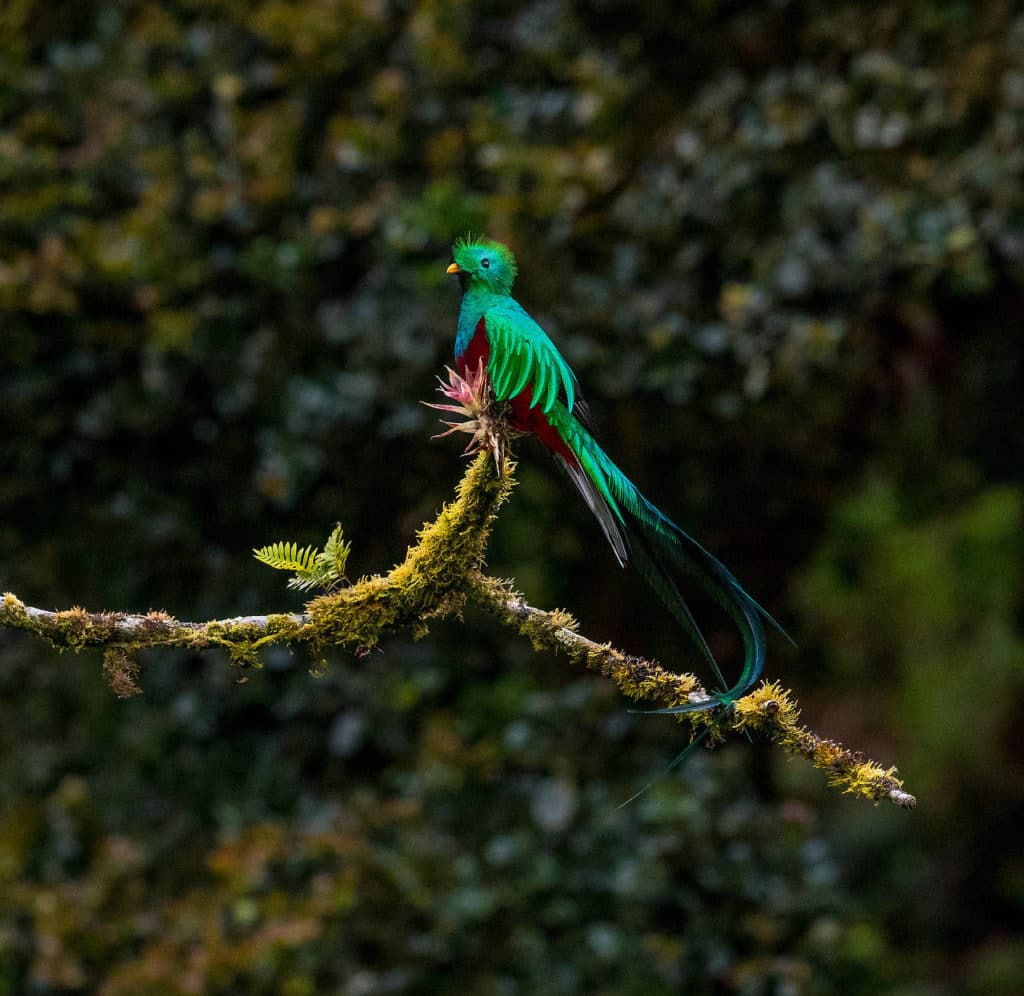
Natural History of the Resplendent Quetzal
We can find the Resplendent Quetzal in cool montane cloud forests of Central America. It easily blends into the epiphyte-draped foliage of cloud forests with its bright green iridescent plumage. Resplendent Quetzals are fairly common throughout their range in suitable habitat. They feed on a variety of fruits, especially little avocados of the laurel family. In fact, they play an important role in assisting with the dispersal of this fruit’s seeds. Quetzals will also eat insects and small vertebrates including frogs and lizards. They can hover and stall mid-flight to pluck fruits from the branches.
Resplendent Quetzals are territorial, monogamous breeders, but are solitary during the non-breeding season. Like other members of the trogon family, they are cavity nesters. They excavate their own cavities in soft, decomposing tree trunks using their stout, strong bills. They breed from March to June, varying in different locations within their range. Both males and females are involved in all aspects of breeding, from nest building and incubation to rearing the young after they fledge. Males tend to incubate during the day and females take over the role at night. When the male is inside the nesting cavity, its long tail feathers wrap around and stick back out the hole. The incubation period is approximately 18 days, and chicks fledge at three weeks of age.
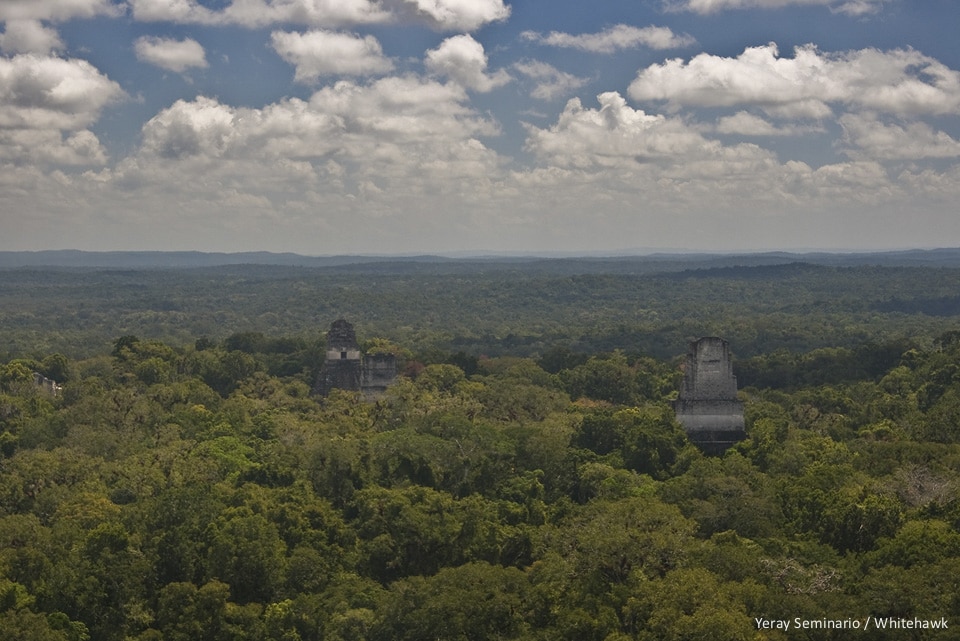
Why the National Bird of Guatemala?
Guatemala declared the Resplendent Quetzal as its national bird in 1871. The quetzal was chosen as the national bird from nearly 750 species of birds found in Guatemala, showing just how special it is. It is revered in the country, and its cultural importance dates way back to the Pre-Columbian Mesoamerican civilizations.
The Resplendent Quetzal was a sacred bird in both Aztec and Mayan cultures, where priests and royalty wore quetzal feathers during ceremonial events. It is culturally associated with the “snake god,” Quetzalcoatl. In Mayan culture, it was forbidden to kill a quetzal. However, they were frequently trapped, had their tail feathers removed, and then were released back into the wild. These cultures revered the quetzal as the “god of the air,” and as symbols of light, freedom, and wealth.
The Quetzal is highly emblematic in Guatemala. The coat of arms, flag, postage stamps, currency, and countless souvenirs all carry the image of the quetzal. The Guatemalan Quetzal (GTQ) is the national currency of Guatemala.
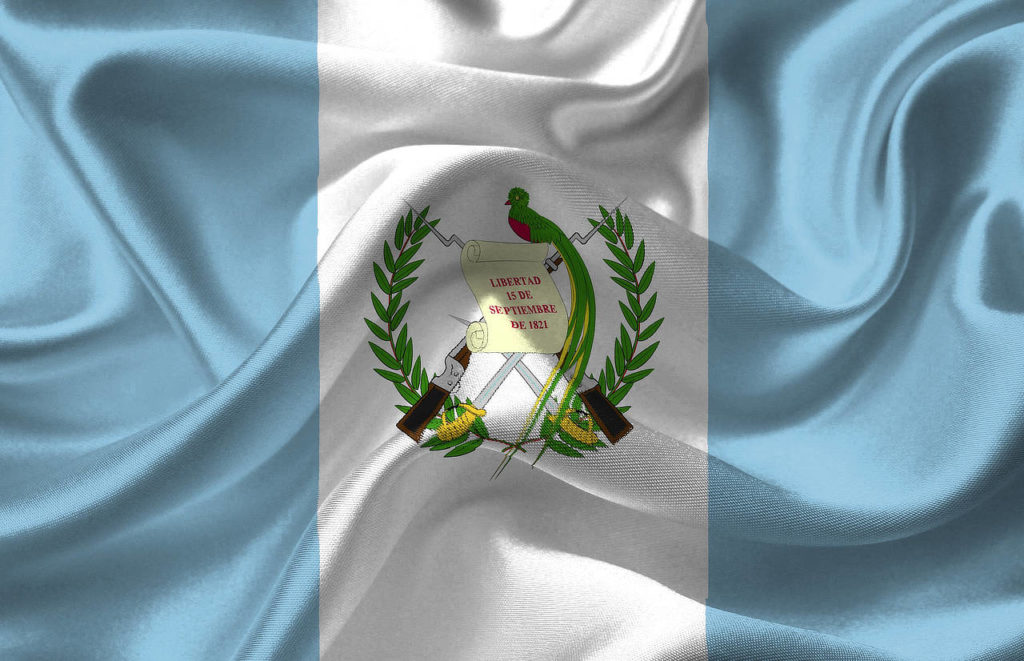
Status and Conservation
Resplendent Quetzals have been hunted and trapped in the past, but the major threat to this beautiful bird is deforestation and habitat loss. The IUCN classifies the Resplendent Quetzal as Near Threatened throughout its range, with a population estimated under 50,000 individuals. It is fairly easy to see in several protected areas throughout its range, and especially in western Panama and Costa Rica.
There are many birding tours that focus on finding Resplendent Quetzals throughout their range. One of the best ways to support quetzal conservation is to participate in ecotourism and promote the protection of its limited habitat in Central America. Contact us to find out more about finding Resplendent Quetzals in the wild!
Fun Facts about the Resplendent Quetzal
- It is the only bird on earth with the word “resplendent” in its common name.
- Young males take up to three years to grow their long tail feathers to the full length.
- Aztec and Mayan cultures considered Quetzal tail feathers as symbols of wealth and even used them as currency.
- Resplendent Quetzals make altitudinal migrations outside of the breeding season, where they presumably seek out food at lower elevations.
- In several Mesoamerican languages, the word “quetzal” means sacred, erected, or precious.
Join Us in Search of Quetzals!
Seeing a wild Resplendent Quetzal is an unforgettable experience for any birder (and non-birders!). We regularly see quetzals, both males and females, on our tours in western Panama. Check back regularly on our Latin American tours for more upcoming tour destinations in Central America where Resplendent Quetzals can be found. Join us on an adventure to find the national bird of Guatemala!

